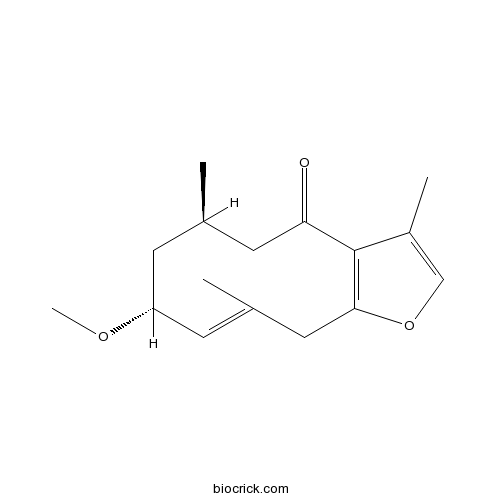Commiphora myrrha
Commiphora myrrha
1. The products in our compound library are selected from thousands of unique natural products; 2. It has the characteristics of diverse structure, diverse sources and wide coverage of activities; 3. Provide information on the activity of products from major journals, patents and research reports around the world, providing theoretical direction and research basis for further research and screening; 4. Free combination according to the type, source, target and disease of natural product; 5. The compound powder is placed in a covered tube and then discharged into a 10 x 10 cryostat; 6. Transport in ice pack or dry ice pack. Please store it at -20 °C as soon as possible after receiving the product, and use it as soon as possible after opening.

Natural products/compounds from Commiphora myrrha
- Cat.No. Product Name CAS Number COA
-
BCN8603
9-Methymyrrhone1809980-22-0
Instructions

-
BCN8912
2-Methoxy-5-acetoxy-furanogermacr-1(10)-en-6-one1809980-25-3
Instructions

-
BCN8642
Myrrhone183551-83-9
Instructions

-
BCN3010
Furanodienone24268-41-5
Instructions

-
BCN8899
[(1(10)E,2R,4R)]-2-Methoxy-8,12-epoxygemacra-1(10),7,11-trien-6-one75412-95-2
Instructions

Bioactive sesquiterpenoids and steroids from the resinous exudates of Commiphora myrrha.[Pubmed: 29533080]
Chemical investigation of the resinous exudates of Commiphora myrrha has led to the isolation of four sesquiterpenes (1a/1b, 2, and 3), including one pair of new sesquiterpene enantiomers (1a/1b), one new racemic mixture 2, and two steroids (4 and 5). Their structures were elucidated by spectroscopic analysis, and the absolute configurations of 1a/1b were determined by CD analysis. The antimigratory potential of compounds 1-5 were evaluated and compound 3 was found to inhibit human hepatocellular liver carcinoma HepG2 cell migration in dose-dependent manner.
Frankincense and myrrh essential oils and burn incense fume against micro-inhabitants of sacral ambients. Wisdom of the ancients?[Pubmed: 29530608]
Essential oils obtained from resins of Boswellia carteri Birdw. and Commiphora myrrha (Nees) Engl., commonly known as frankincense and true myrrh respectively, have been used extensively since 2800 BCE for the treatment of skin sores, wounds, teeth, inflammation, and urinary tract diseases in traditional medicine; for preparation of mummification balms and unguents; and also as incense and perfumes. Since ancient times, burning of frankincense and myrrh in places of worship for spiritual purposes and contemplation (a ubiquitous practice across various religions) had hygienic functions, to refine the smell and reduce contagion by purifying the indoor air.


